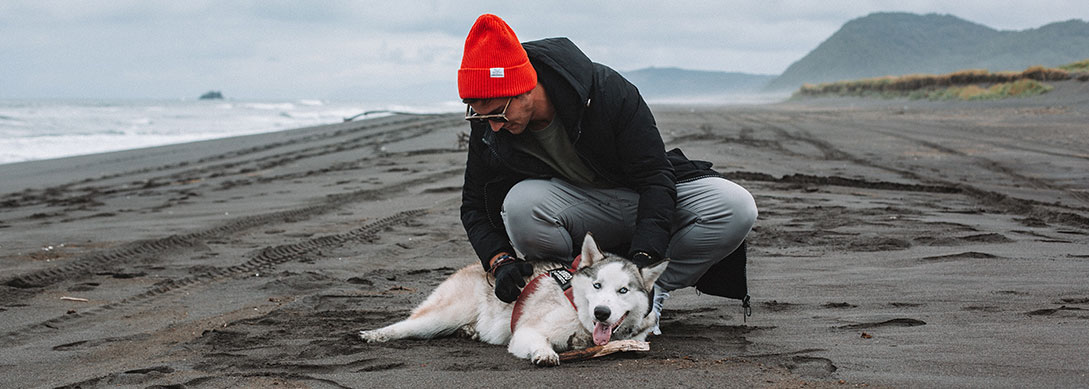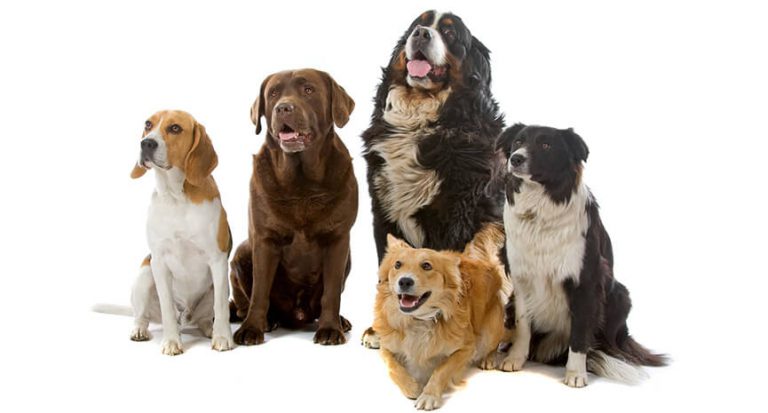We have all seen the human-animal bond in one form or another. Whether with your own pet or someone else’s pet, the bond between a person and an animal exists on many levels. Although officially termed in the early 1980s and was initially taught in veterinary universities over a decade ago, the concept of a human-animal bond began in the 1930s. But the relationship between animals and humans has existed for thousands of years. As animals have become increasingly domesticated, this bond became more evident.
People are interested in the bond between humans and companion animals for a variety of reasons. Many pet owners see their pets as a valued member of the family and openly admit to loving their pets and having strong attachments–they simply enjoy the companionship and unconditional love their pet brings.
The American Veterinary Medical Association (AVMA) describes the human-animal bond as a “mutually beneficial and dynamic relationship between people and animals that is influenced by behaviors that are essential to the health and well-being of both.”
Practitioners including counsellors, veterinary surgeons, occupational therapists and GPs are increasingly aware of the influence that pets can have in the lives of their clients and how pets can be included in the delivery of care. And students and researchers are keen to qualify and quantify this unique relationship by advancing the understanding of how it works.
Such public examples include K-9 police and military units, search and rescue dogs, seeing-eye dogs, and therapy animals. These “working” animals, primarily dogs, typically receive the best of care and medical service. This creates a high level bond for successful training and devout loyalty.
On a personal level, the human-animal bond may reach levels much deeper than ever expected. There are many stories and pictures on the Internet representing the bond, both by animals and by people. One such example was of a fallen Navy SEAL where his Labrador Retriever refused to leave the side of his owner’s casket. Another example was of a cat separated from her people during a vacation, but 2 months later and 200 miles away, the cat found her way home. The found cat was not a look-alike stray–its identity was confirmed with a microchip. Entertainment has also depicted the human-animal bond. Such movies include Homeward Bound: The Incredible Journey, Marley and Me and War Horse, just to name a few.
The human-animal bond exists, from therapy animals to your own personal home pet. Despite psychologists and sociologists trying to put forth theories to try to explain why the human-animal bond exists, does it really matter?
Our pets give us such support and unconditional love, it should only be natural to return that love. “Treat people the way you want to be treated” also applies to our pets. Give them the TLC they deserve.
How To Bond With Your Pet
Set aside time to hang out – If you want to bond with your pet, you have to actually spend time with it. Most pets enjoy routine, so set aside a specific time each day to completely focus on your furry friend. What you do during your time together is up to you, but if you keep your pet time sacred, you’ll be bonded before you know it.
Pet your pet – Pets are called “pets” because petting is part of the gig. As you pet your animal, the animal becomes accustomed to your touch and begins to trust you. As trust grows, your feelings reciprocate and bonding begins.
Make time for grooming – Have you ever watched a mama animal with her babies? A lot of her time is spent licking and grooming her little ones. No one’s asking you to lick your pet, but take a cue from the animal kingdom and spend some time brushing and cleaning Fido or Fluffy. This type of intimate interaction feels natural to your pet and helps you grow closer.
Make a play date – Every pet has a distinct personality, and playing with your pet allows you to see its full range. The more you can appreciate your pet’s personality, the more connected you’ll feel to it.
Eats & treats – They say the way to a man’s heart is through his stomach… so maybe men aren’t all that different from animals. Your pet’s dependence on you for food provides the perfect opportunity for bonding. As your pet begins to trust you as a food source, a ritual around meals develops. Allowing yourself to enjoy this process can really bring you closer to your pet.
Take a hike – While not every type of pet is suited for an actual hike, most pets benefit from and appreciate regular exercise. Like many other forms of bonding, exercising with your pet helps you develop a knowledge and understanding of one another that enables you to sync expectations and routines.
Set boundaries – A happy pet home is a pet home with boundaries. When you set rules and expectations for your pets, they become comfortable with you in the leadership role, and you become comfortable as the leader. Boundaries may be difficult to set at first, but when you know your pet will respond to your commands, you’ll feel confident in your pet-owner relationship.
While We’re At It…
Animal/Animal Bonds
Several years ago there was an owner with two black Labrador retrievers, both spayed females and littermates. Every night, they would lie on each side of the owner’s recliner while he spent the evening reading a book.
They were all progressing in years and one day, one of the female labs, named Edie, was brought in to the vet, according to the owner, lumps were popping up all over her body. A biopsy showed the cause to be a malignant form of cancer of the lymph nodes.
And, as with all these cases, the disease reached a point where the medicine lost its ability to control the cancer, and Edie quickly went downhill. The owner then made the decision to euthanize her.
The owner brought Edie in to be euthanized and then cremated. He would have preferred to bury her at home, but it was the middle of winter and the ground was frozen. That day he took home only her collar to remember her by.
For the next month, the remaining lab did not lie by her master, but rather she chose to remain in the kitchen. The owner asked the vet about this. Why did the only other member of the household seem to be ignoring him? I explained that I had seen other dogs apparently grieve the loss of a companion.
One day, the man needed to get some tools to take care of routine household repairs. This drawer was just above the spot where the lab had chosen to lay for the previous two months. As the man reached into the drawer for a hammer, the lab jumped in front of him and grabbed her littermate’s collar in her mouth and started whining as she held it. It had been placed in the drawer the day her canine friend didn’t return home. The man, seeing the reaction, in his own words, “broke down and cried like a baby.” When he told of the story, all were amazed by the dog’s actions and for how long she had remained vigilant to the memories of her littermate. It certainly went against the idea that animals have a short attention span and also showed how the remaining dog associated the smell of an inanimate object like a collar with an absent friend.
For the remainder of their years together, that collar sat on the end table by the man’s recliner. His single canine friend was also there, lying by his side, and I believe she also felt the presence of her sister.





